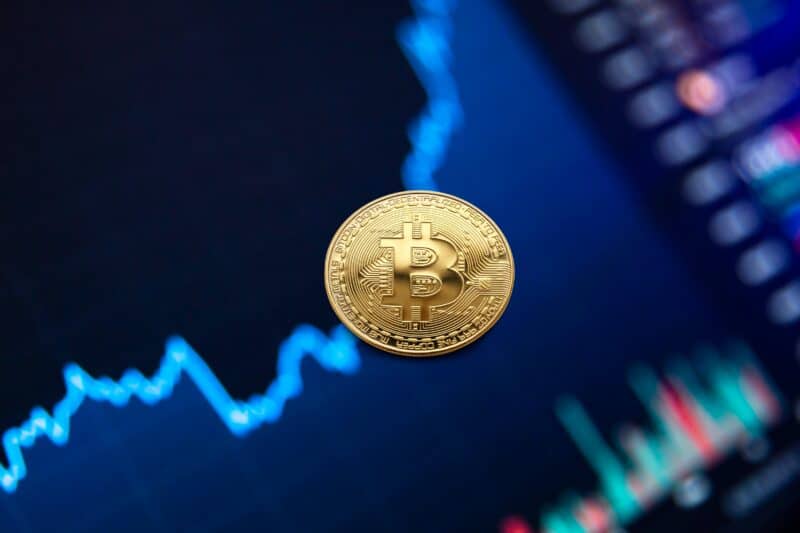Inflation is weakening, interest rates are set to be lower, and so investors are looking for riskier assets. If we invest in Bitcoin through futures contracts, the cryptocurrency could serve as a pension hedge.
Cryptocurrencies are eagerly awaiting 2024, especially due to the Bitcoin halving, which occurs every four years. The decision by the U.S. Securities and Exchange Commission (SEC) on applications for ETF funds on Bitcoin spot will also be a focal point for investors.
“Bitcoin had a very high increase in 2023, spectacular compared to other assets,” says Michał Stajniak, XTB expert, in a conversation with MarketNews24. “It gained approx. 150% since the beginning of the year, and has a chance to attack historical peaks in 2024.”
By the end of the year, we paid about 40,000 USD for Bitcoin, and the historical peaks are approx. 68,000 USD. This level seems remote, but it was in 2023 that gold reached its new, historical peaks, for the same reason why cryptocurrencies increased. This reason is the decrease in interest rates, which the Fed will start to introduce from May 2024, or maybe even earlier.
What is the awaited halving by investors? It’s a decrease in the supply of Bitcoin obtained through mining. Every four years, the amount of Bitcoin received is halved.
“– It is to prevent Bitcoin from being mined too quickly, it is stretched over time, and it is a process that aims to increase the value of this cryptocurrency – explains the XTB expert. – The last three halvings were marked by spectacular cryptocurrency increases. We can compare this situation to the changes in gold prices when its mining decreases.”
The key question is whether the current level of cryptocurrency adoption indicates a long-term fundamental change?
In November 2023, daily Bitcoin transactions reached a record level of 710,000, but only 235,000 were financial transactions, resulting in a slight 10% annual increase. The number of active Bitcoin addresses has been stable for over three years.
Despite over 15 years since the inception of Bitcoin, its adoption curve does not compare to the rapid development of the Internet or technologies such as ChatGPT. Factors such as the removal of resources from cryptocurrency exchanges, bank failures, and new technological solutions in the Bitcoin network, increased user activity. However, transaction and adoption data do not fully justify the practical utility of over 22,000 existing cryptocurrencies.
In late 2023, a 4.3 billion USD fine imposed on Binance by the U.S. Department of Justice and proceedings against its founder Zhao, caused concern in the market. It did not lead to widespread panic, signaling that investors do not expect a repeat of ‘FTX’. Even so, it could be a signal that the trend of large-scale withdrawal of funds from cryptocurrency exchanges will continue. Cryptocurrencies are still more of “anti-system” and speculative assets than products of widespread adoption (Visa processes approx. 597 million transactions a day, compared to 1.9 million daily transactions on the Ethereum and Bitcoin blockchains combined).
Financial institutions notice the growing speculative demand and explore ways to monetize it. Acceptance of Bitcoin ETFs could lead to increased investments by both retail and institutional investors.
“However, there is a question mark ahead of us whether such funds will be accepted, the SEC does not want this to happen and will soon have to make more decisions – explains M.Stajniak from XTB. – It’s worth noting that ETF creation for a particular asset has usually been beneficial for such assets, as was the case with gold in 2003.”
Both the final SEC deadlines (January 10 and March 15) and the estimated halving date of April 23 lead to the conclusion that the first half of 2024 will be crucial for cryptocurrency dynamics.
In the future, we might save for retirement in Bitcoin through ETFs on this cryptocurrency.
